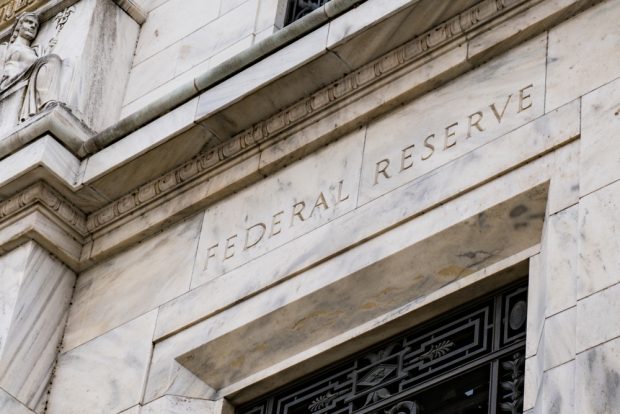 Federal Reserve Building in Washington, D.C. (Source: Shutterstock)
Federal Reserve Building in Washington, D.C. (Source: Shutterstock) The Fed's 75-basis-point rate hike announced Wednesday was its sixth increase in a row, a pattern that has increased borrowing costs for consumers, raised net interest margins for credit unions and lowered the value of their investments.
It was the fourth 75 basis point rate hike in a row. It met the expectations of most economists, including those from CUNA and NAFCU.
Recommended For You
Fed Chair Jerome Powell said rates will rise further, but the size of the increases will lessen at some point.
"That time is coming," Powell said. "It might come at the next meeting or the next one."
The Fed next meets Dec. 13-14, then on Jan. 30-31, 2023.
NAFCU Chief Economist Curt Long said the Federal Open Market Committee is "foreshadowing a slower tightening pace. The text provides plenty of wiggle room, but barring a hot CPI (Consumer Price Index) figure next week, market expectations are likely to coalesce around a 50-basis point hike in December."
 Curt Long
Curt Long CUNA Senior Economist Dawit Kebede the Fed's decision to raise its target rate range to 3.75% to 4.00% will make it more expensive for consumers to finance big price items.
"Credit unions managed to increase their market share in auto loan origination this year because they charge lower interest rates compared to other lenders and there is pent-up demand for cars," he said. "However, as the Federal Reserve continues to increase rates to fight inflation, we may see a slow down in auto lending."
 Dawit Kebede
Dawit Kebede For credit unions, this year's fast pace of rate hikes has meant higher core earnings and lower investment values.
Net interest income has been rising this year as higher payouts on savings has lagged gains in interest income on loans.
For the 10 largest credit unions by assets, net interest income was an annualized 3.49% of average assets for the three months ending Sept. 30, up from 3.12% in the second quarter and 2.89% a year earlier.

However, credit union consultant Mike Higgins said interest expenses are starting to rise sharply at some credit unions to maintain and attract deposits.
"Deposits have economic value again," Higgins said. "The fact that you can now make a good spread on deposits flips the script. Everyone will want deposits if they can earn a decent risk-free spread that covers the cost of capital — including 'non-traditional' banks and investment houses."
On the flip side, balance sheets are showing rapidly growing unrealized losses on debt securities available for sale (AFS). Among the Top 10, AFS securities were showing an accumulated net gain that was 0.3% of their net worth at the end of September 2021. As of Sept. 30 this year, they showed a net loss that was 25% of net worth.
Higgins said that ratio generally falls as interest rates rise.
"Each time the yield curve shifts upward, it gets worse," he said. "Some of it is driven by Fed movements on the short end, some of it is driven by general economic uncertainty and the need to have enough yield to offset that on the longer end."
Among four of the Top 10 credit unions the ratio was -30% to -35%: Navy Federal Credit Union of Vienna, Va. ($156.5 billion, 12.1 million members), State Employees' Credit Union of Raleigh, N.C. ($52.1 billion, 2.7 million members), Golden 1 Credit Union of Sacramento, Calif. ($18.3 billion, 1.1 million members) and Alliant Credit Union of Chicago ($18 billion, 734,595 members).
Three credit unions had ratios of -0.3% to -10%: PenFed Credit Union of Tysons, Va. ($35.9 billion, 2.8 million members), SchoolsFirst Federal Credit Union of Santa Ana, Calif. ($27.7 billion, 1.3 million members) and America First Federal Credit Union of Riverdale, Utah ($17.6 billion, 1.3 million members).
Higgins said a ratio of -35% is not unusual.
"It's mostly a marker of interest rate risk, but if the investments are held to maturity, there is no loss. It goes away. The bond simply paid what it was supposed to pay," he said.
© 2025 ALM Global, LLC, All Rights Reserved. Request academic re-use from www.copyright.com. All other uses, submit a request to asset-and-logo-licensing@alm.com. For more information visit Asset & Logo Licensing.






